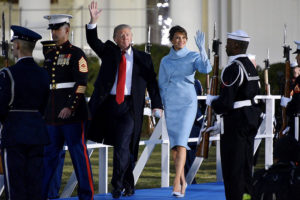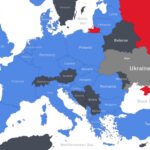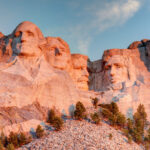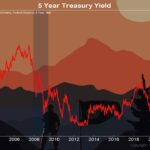
President Donald Trump and First Lady Melania head to the Inaugural Parade reviewing stand from the White House in Washingtion, D.C., Jan. 20, 2017. Trump was sworn-in as the 45th president of the United States earlier in the day. U.S. Coast Guard photo by Petty Officer 2nd Class Patrick Kelley.
Yes models can be helpful, but there are too many “known unknowns.” Despite ongoing efforts to create elaborate predictive election forecasting models, “they are only as good as the assumptions built into them,” Henry Olson reminds readers of American Greatness.
In 2016, for example, Slate’s Sasha Issenberg, whom Mr. Olson refers to as “the apostle of political data analysis,” predicted (based on her model) who was winning each swing state as the aggregate vote totals were being reported throughout Election Day.
How’d that work out? Reports Mr. Olson:
Their model told us that Clinton would win Iowa, Ohio, Florida, Pennsylvania, and Wisconsin—all states she lost, in some cases by large margins.
Keep that example in mind over the several days as you read or hear confident predictions about what will happen—and then settle in front of your computer or the television on election night to watch as someone inevitably gets it wrong.
Read more here.
If you’re willing to fight for Main Street America, click here to sign up for the Richardcyoung.com free weekly email.





